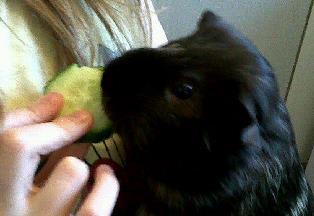Environmental enrichment is just as necessary for exotic companion mammals as it is for dogs and cats. A loving pet parent who offers routine veterinary care and proper nutrition can also easily enhance their small pet’s quality of life just by following a few guidelines below.
Why is environmental enrichment so important? Lack of sensory stimulation can cause negative behaviors such as over grooming, self-mutilation, restlessness, cage chewing and timidity. It can also lead to anorexia or obesity due to stress, boredom, and general inactivity.
There are a variety of safe toys and healthy food treats that stimulate natural, positive behaviors, increase exercise, and provide mental stimulation to offset boredom.
Social Enrichment
Social enrichment can be the most effective form of enrichment for small pets but must be approached with regard to the particular species in mind.
Pets such as rabbits, guinea pigs, rats, mice, chinchillas and sugar gliders are most comfortable housed in groups. Supervision is required, however, to ensure the pets have bonded and the housing is adequate to meet their needs.
Be mindful of pets such as Syrian and Chinese hamsters, however, that may be prone to aggression toward their housemates. Separation might be required, and consult your veterinarian for proper direction on how to care for more than one pet. Care is also advised should you try to “mix” different species. Let your veterinarian guide you with advice.
Physical Enrichment
Physical enrichment entails making the pet’s environment conducive to performing natural behaviors such as digging, chewing, gnawing, climbing, and perching – all stress relieving activities that enhance the pet’s well-being.
Pets that prefer deep bedding, for example, include hamsters and gerbils, both for body temperature regulation and tunneling that gerbils enjoy.
Carpeted ramps can give pets access to shelving or other vertical spaces they enjoy, and introducing novel objects from time to time can improve the pet’s spatial memory and lower stress to new situations.
Nutritional Enrichment
Enriching the environment with healthy, species-appropriate food treats can foster stimulation and increase exercise.
This can be accomplished simply by scattering food items in bedding for small rodents and other small mammals housed in groups, thereby encouraging foraging and increasing activity.
Discuss feeding requirements with your veterinarian to avoid overfeeding and help define treat allotments.
Sensory Enrichment
Sensory enrichment can be achieved by offering items with new or novel tastes and smells. Rotate cage furniture, for example, and provide a day/night cycle appropriate for the particular pet.
Occupational Enrichment
Occupational enrichment entails providing materials that allow the pet to have some control over their environment. How is this accomplished? Provide materials so they can build a nest, or position wood blocks so they can gain access to another area by chewing.
It’s never too late to enhance your pet’s life
Discuss ways you are enhancing your pet’s environment with your veterinarian for further advice. Each exotic companion mammal species is unique in their care and feeding requirements, and adjustments should be made based on the particular pet.
Source: Clinician’s Brief, March 2014, Teresa Bradley Bays, DVM, CVA, DABVP (ECM), Belton Animal Clinic & Exotic Care Center, Belton, Missouri
Recommended Reading:
Happy World Rat Day
Guina Pig facts and basic husbandry
Rabbit care – tips for new pet owners
Tips for raising a healthy ferret
Joe Martins, DVM, Belle Mead Animal Hospital







